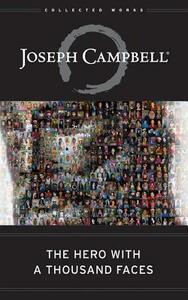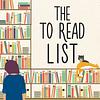Take a photo of a barcode or cover
I'm really not sure how to rate this book. I'll admit, I probably approached this trying to get information that wasn't intended out of it (I was hoping studying the monomyth would help me un-sag the second acts in my own writing), but I consider myself a casual fan of mythology and I found this to be a slog. I don't question that Joseph Campbell knows a lot about mythology and psychology (his analysis of the former is very solid), but I'm not sure if he's the best at conveying the information. Maybe I'm not as smart as I thought, but there were times where I had to go back and reread paragraphs multiple times in order to figure out what was going on.
I am not a fan of Joseph Campbell, to put it mildly.
The concept of a monomyth/hero's journey is horrifyingly reductive of folkloric/mythologic narrative structure. The emphasis throughout the majority of these stories is not on the journey or the characters but rather on a moral point being made (Aesop's fables, Perrault's collection, Grimms' tales, etc.; these tend to impart a moral lesson or caution, i.e., Grandmother Tiger and variations thereof, where the details of the story itself may change while the moral at the end remains intact). The concept of a "hero's journey" is specific to a certain subset of cultural mythology, certainly not universal.
The majority of myths that display that simplified descriptive narrative pattern can also be analysed from different perspectives (i.e., viewing Grandmother Tiger from the perspective of the tiger alters the moral while keeping the narrative structure the same) for different results, functions, and purposes. By reducing mythology to the concept of a single "universal" pattern, Campbell reduces mythology to Campbell's idea of what mythology is. Similarly, the monomyth oversimplifies the concept of a "hero" and a "journey," flattening nuance and narrative distinction. When cherry-picking with implicit bias already in mind, patterns can easily be manufactured; this is what Campbell does in his "observation," using descriptive terminology (i.e., stories have a beginning-middle-end format, but not all stories are defined by that format, nor even have to conform to it) to retrofit the construction of mythology.
Others have criticised the monomyth's relegation of most people to either helpers or objects along the hero's "path"; with such a focus on a typologied idea of Western masculinity, the monomyth leaves little room for "heroes" of other cultures, genders, backgrounds, or mentalities. The concept of the monomyth is heteronormative, patriarchal, ableist, restrictive, and emblematic of an inherent hierarchal caste system that places the "hero" at the apex and the "rest" beneath. A monomyth does not leave room for the natural progression of human life as exemplified in the folklore Campbell somehow managed to overlook: the process of ageing, raising children, having families, focusing on objectives separate from glory or renown or heroism. Kindness is not rewarded in the monomyth. The monomyth has no room for friendship, affection, community, or even happiness. The monomyth produces heroes which suffer and cause suffering in turn.
The monomyth traps entire communities within its rigid structure: based on your societal position and the body you inhabit, you will be relegated to a certain position; race, gender, sexuality, ability, relation to the "hero." The monomyth traps everything. The obsessive focus on Randian individualism is not representative of actual folklore (apart from perhaps the nationalist wet dream of idealised masculinity), which often rewards community, communication, ingenuity, and the importance of teamwork. Remember, a culture's mythology often serves as its lessons for children, its moral precepts, and its foundations of social mores; the glorious path of being a lone wolf who cares for no one and dies alone at the age of 27 is hardly conducive to building a lasting community. To be clear, the monomyth's function is not exclusively to reinforce cultural hegemonies of patriarchy, nationalism, white supremacy, etc., but it acts as an incredibly successful recruitment strategy and general tool. Mythology is not, by definition, inherently inclusive; it was always designed to preach specific schema. Wedging diversity into a monomyth does not change that, it simply preaches a different schema in the same format.
Robert A. Segal wrote an excellent response delineating some of the flaws inherent in the monomythic concept, as well as an article discussing Campbell's antisemitism, both of which are worth reading. Campbell is not without his merit, although none of his ideas were per se new; however, the popular response to his work is so distressingly limited and formulaic that it diminishes the potential cultural influence that folklore can have. While Campbell's theories have their place in describing certain subsets of mythology, we would do well to retire the concept of a monomyth at large in favour of embracing mythology in all its varied forms.
The concept of a monomyth/hero's journey is horrifyingly reductive of folkloric/mythologic narrative structure. The emphasis throughout the majority of these stories is not on the journey or the characters but rather on a moral point being made (Aesop's fables, Perrault's collection, Grimms' tales, etc.; these tend to impart a moral lesson or caution, i.e., Grandmother Tiger and variations thereof, where the details of the story itself may change while the moral at the end remains intact). The concept of a "hero's journey" is specific to a certain subset of cultural mythology, certainly not universal.
The majority of myths that display that simplified descriptive narrative pattern can also be analysed from different perspectives (i.e., viewing Grandmother Tiger from the perspective of the tiger alters the moral while keeping the narrative structure the same) for different results, functions, and purposes. By reducing mythology to the concept of a single "universal" pattern, Campbell reduces mythology to Campbell's idea of what mythology is. Similarly, the monomyth oversimplifies the concept of a "hero" and a "journey," flattening nuance and narrative distinction. When cherry-picking with implicit bias already in mind, patterns can easily be manufactured; this is what Campbell does in his "observation," using descriptive terminology (i.e., stories have a beginning-middle-end format, but not all stories are defined by that format, nor even have to conform to it) to retrofit the construction of mythology.
Others have criticised the monomyth's relegation of most people to either helpers or objects along the hero's "path"; with such a focus on a typologied idea of Western masculinity, the monomyth leaves little room for "heroes" of other cultures, genders, backgrounds, or mentalities. The concept of the monomyth is heteronormative, patriarchal, ableist, restrictive, and emblematic of an inherent hierarchal caste system that places the "hero" at the apex and the "rest" beneath. A monomyth does not leave room for the natural progression of human life as exemplified in the folklore Campbell somehow managed to overlook: the process of ageing, raising children, having families, focusing on objectives separate from glory or renown or heroism. Kindness is not rewarded in the monomyth. The monomyth has no room for friendship, affection, community, or even happiness. The monomyth produces heroes which suffer and cause suffering in turn.
The monomyth traps entire communities within its rigid structure: based on your societal position and the body you inhabit, you will be relegated to a certain position; race, gender, sexuality, ability, relation to the "hero." The monomyth traps everything. The obsessive focus on Randian individualism is not representative of actual folklore (apart from perhaps the nationalist wet dream of idealised masculinity), which often rewards community, communication, ingenuity, and the importance of teamwork. Remember, a culture's mythology often serves as its lessons for children, its moral precepts, and its foundations of social mores; the glorious path of being a lone wolf who cares for no one and dies alone at the age of 27 is hardly conducive to building a lasting community. To be clear, the monomyth's function is not exclusively to reinforce cultural hegemonies of patriarchy, nationalism, white supremacy, etc., but it acts as an incredibly successful recruitment strategy and general tool. Mythology is not, by definition, inherently inclusive; it was always designed to preach specific schema. Wedging diversity into a monomyth does not change that, it simply preaches a different schema in the same format.
Robert A. Segal wrote an excellent response delineating some of the flaws inherent in the monomythic concept, as well as an article discussing Campbell's antisemitism, both of which are worth reading. Campbell is not without his merit, although none of his ideas were per se new; however, the popular response to his work is so distressingly limited and formulaic that it diminishes the potential cultural influence that folklore can have. While Campbell's theories have their place in describing certain subsets of mythology, we would do well to retire the concept of a monomyth at large in favour of embracing mythology in all its varied forms.
Didn’t click for me. But shows we aren’t that different throughout time.
I'd been meaning to read this for years and years, and now that I have...hmm. Anything Jungian makes me a little nonplussed. The fundamental examination about how stories work is great, but the book comes across as dated in places.
Fascinating!!! Utterly fascinating. Skimming the Freud author!crush, this book is a helpful guide to the hero cycle, whether you've studied it before or are new to it.
informative
inspiring
reflective
slow-paced
informative
slow-paced
"Good on Joseph Campbell for coming up with the theory, but... I think the diagrams sort of suffice." - Episode 99, A TASTE FOR A THOUSAND FACES
https://thetoreadlistpodcast.libsyn.com/a-taste-for-a-thousand-faces
https://thetoreadlistpodcast.libsyn.com/a-taste-for-a-thousand-faces
challenging
informative
reflective
slow-paced
informative
reflective
slow-paced






